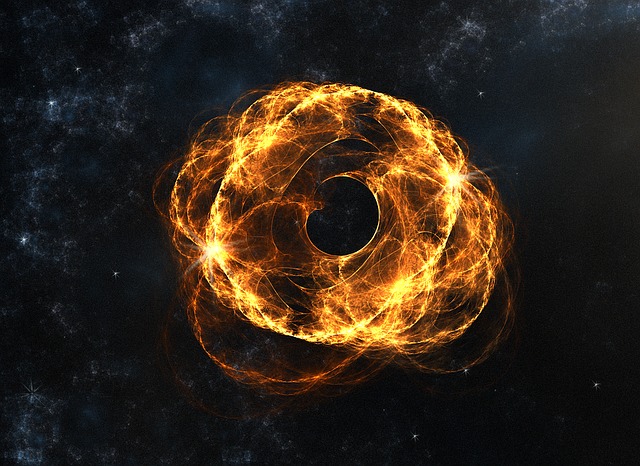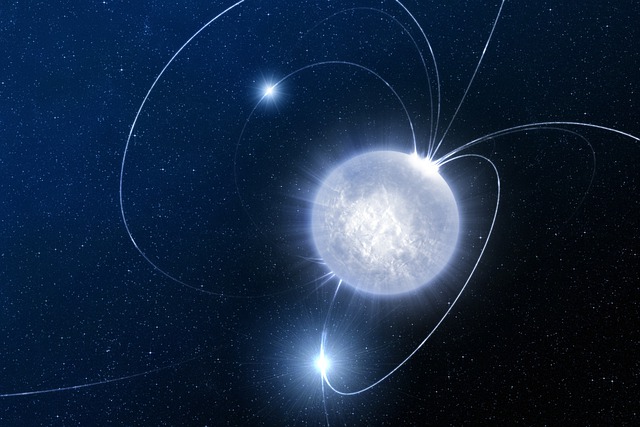*This post may contain affiliate links. This means we may make a commission if you purchase an item using one of our links*
The main difference between a quasar and kilonova is that quasars are the brightest known entities in our universe that surround supermassive black holes whilst a kilonova occurs when 2 neutron stars merge together producing an explosion that is 1,000 times the brightness of a nova explosion.
There are numerous other differences between these two extremely bright cosmic phenomena so, continue reading if you want a more detailed look at each of them below.
What Is A Quasar?
Table of Contents

Quasars are extremely bright celestial objects powered by supermassive black holes, found in the center of galaxies. They tend to also be referred to as an active galactic nucleus or AGN for short.
Quasars were initially called quasi-stellar radio sources however, this name isn’t entirely consistent with the type of waves they generate as only around 10 percent of all quasars that have been discovered produce strong radio waves.
As for how bright they can be, quasars have been observed to exceed levels that are upwards of 100 times the brightness of the galaxies that hold them.
Although not an absolute, many scientists believe these bright objects are formed when light escapes at the edge of a supermassive black hole just before reaching its event horizon. Some light gets drawn in whilst other particles jet out at a tremendous pace, which is how the erratic and powerful light of a quasar forms.
At this moment in time we have discovered roughly 750,000 unique quasars extending across various ages, with the farthest from us roughly 13 billion light years away.
Therefore, not only are these enigma’s extraordinarily powerful but, they can even be used as time capsules to observe how our universe came to be, relatively close to when the theorized big bang occurred.
What Is A Kilonova?

For a kilonova to occur 2 neutron stars need to collide. Neutron stars are formed when a star around 8 solar masses explodes through a supernova explosion.
These neutron stars also tend to a be in a binary star system. In this situation if the neutron stars are close to each other, they will gradually spin inwards as a result gravity until they merge together and cause an explosion.
As the name kilo would suggest, kilonovae are typically 1000 times more bright than your average nova however, when it comes to comparing them to your average supernova, they fall far short, whether it be in terms of luminosity or power.
After the explosion has set, scientists have observed that one possible outcome of this collision would be the formation of a black hole.
However, this is unlikely to be the most common outcome as black holes require materials that add up to around 3 solar masses but, according to the Laser Interferometer Gravitational-Wave Observatory study on kilonova collisions, it appears some can result in black holes.
Other kilonovae may have an afterglow that may get brighter over a few months or years after the explosion, which typically will be formed by the x-rays and radio emissions that the explosion ejects.
Of course if a black hole forms, these emissions will eventually fall into its singularity.
Similarities Between A Quasar And Kilonova
Both are caused as a result of some of the most powerful and extreme activities that happen within our universe but, they aren’t all too similar to each other besides the fact both are really bright and happen when interacting with dead remnants of larger stars.
Kilonovae occur between neutron stars and quasars form around supermassive black holes.
Differences Between A Quasar And Kilonova
In regards to the differences between a quasar and kilonova, they would include the below:
- Quasars are the brightest entities in our universe whilst kilonovae form when 2 neutron stars collide and explode creating an explosion many time brighter than nova but still significantly less than a quasar.
- Quasars tend to last for around 10 million years on average whilst a kilonova explosion lasts for around a few years as a result of its afterglow.
- Quasars tend to surround supermassive black holes which can billions of diameter in size therefore, they are significantly larger than a kilonova explosion.
- Kilonova explosions are potentially able to produce black holes whilst quasars are simply formed around black holes but cannot produce new ones.
- Kilonova explosions tend to be around 9,000 – 11,000 degrees Celsius whilst quasars tend to burn at around 100+ billion degrees.
- Only 750,000 quasars have been discovered in our entire universe. Kilonova explosion aren’t nearly as rare as this, as thousands of potential explosions happen within any given galaxies, of which there are hundreds of millions scattered throughout our universe.
Summary
Although both quasars and kilonovae are amongst the brightest forms any entity in the universe can take, one is still substantially more powerful than the other.
Kilonovae may have the ability to produce brightness 1,000 times more than your average nova but quasars are 1,000 times brighter than galaxies and tend to outshine them for millions of years.

